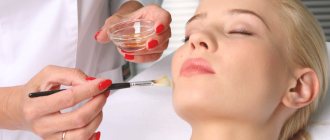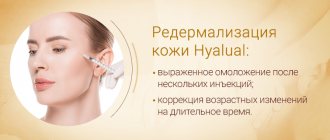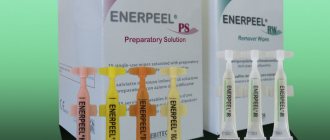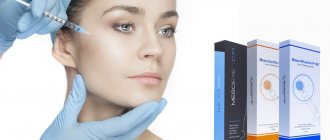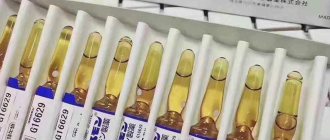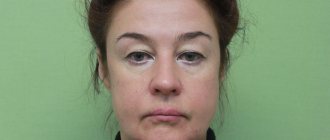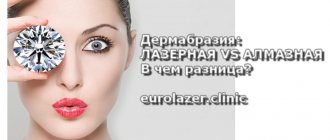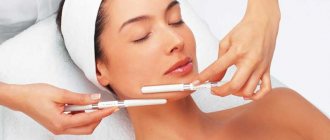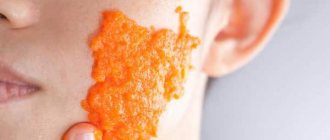Phytic peeling is a cosmetic procedure that involves exposing the skin to a composition whose active ingredient is phytic acid.
Phytin peeling
Some salons refer to peeling with this component as “Hollywood peeling”, since it appeared in the USA. It is there that it is very popular and in demand, since it can be carried out regardless of the time of year, moreover, there is no need for a long recovery period, that is, you can immediately return to everyday activities and appear in society after the procedure.
Features of the procedure
Among superficial peelings based on various acids, phytic peeling is especially popular. Its characteristic feature is that rehabilitation time is required many times less compared to other chemical compounds. Also, this exfoliation technique is ideal for young and problematic skin that is prone to acne.
Phytic acid does not need to be removed and does an excellent job of cleansing and rejuvenating the surface layer of the skin. This component is obtained from cereals, nuts and legumes.
Phytic acid effectively cleanses the skin and makes it younger
Due to its composition, the substance can combine various minerals and macroelements. For a long time, acid was used to bleach wine and other products. Subsequently, scientists discovered properties due to which phytin was banned from being added to food. But the internal unsuitability of the acid opened up new possibilities for external use, namely for the peeling procedure.
Important ! Once on the skin, phytin has a mild but very deep effect, exfoliating the surface of the skin and also eliminating pigmentation. Due to its absorbent properties, the substance cleanses dirt from pores, performing the function of a sponge.
Phytic acid reduces the skin's ability to absorb harmful substances. Also, once in deeper layers, the acid decomposes into new substances that activate cell division, launching recovery processes.
This substance helps to activate skin restoration processes.
The result of the procedure is to give the skin elasticity and even out color. She looks much healthier and more beautiful. Fine and shallow wrinkles are smoothed out, and collagen production is normalized.
A significant argument in favor of using phytin as the main component of peeling is that even with a significant acid content in the composition, it will not be able to penetrate deeper than the required level. Even its increased content does not cause any painful or uncomfortable sensations.
Phytic acid rarely harms the skin and the body as a whole.
Important ! Peeling based on phytic acid is especially in demand among middle-aged women. The product for the procedure can effectively cope with the shortcomings of mature skin, even with such an unpleasant problem as rosacea.
Also, by agreeing to the procedure, the patient will not have to recover for several days or weeks. You can return to your daily and familiar rhythm of life in a short period of time, and the procedure is not affected by the season.
The main point is that such peeling has not been fully studied. This is due to the fact that most components that are used for cosmetic purposes undergo many lengthy tests and checks, which helps confirm their harmlessness.
You won’t have to recover for a long time after phytin peeling.
Important ! Regarding phytic acid, it is worth saying that so far there are results of short-term trials, the result of which was confirmation that such a procedure is completely harmless, but there is no information about possible adverse reactions that may appear in the future.
Prices and brands of peelings
Phytin peeling is produced by: Beauty SPA (Italy), Renew (Israel), CRC (USA), Skin Tech (Spain), MedicControlPeel (Tuscany Laboratory, Russia), SkinMedica (USA), Pleyana (Russia).
The cost of each phytin peeling procedure averages 2000 - 4000 rubles. Since about five sessions are recommended to obtain a lasting result, a full course of these peels will cost about 15,000 rubles.
Pre-peeling preparation will require the purchase of preparations containing glycolic and mandelic acids. Their price can reach 1500 rubles.
Post-peeling care can be carried out using traditional photoprotective, restoring and moisturizing creams, so it does not require the purchase of special preparations.
Thus, the total cost of a full course of phytin peels will average 16,500 rubles.
Tags: other
Market Analytics
- Global cosmetics market 2021: an unprecedented test for the global cosmetics industry
- Top 10 Cosmetic Research and Development of 2021
- 2020 in the beauty industry – innovation without borders
Convenient search for beauty salons on our website
Beauty salons in Moscow Beauty salons in St. Petersburg Beauty salons in Ekaterinburg Beauty salons in Novosibirsk
Latest blog posts on our website
- Naturecream / Properties of the “Sunny” oil itself
- Naturecream / “Sugar” wrinkles - or what glycation can do
- Naturecream / Esterified oils
- Naturecream / Arnica - the magical plant of alchemists
- Naturecream / Tremella Extract - Snow Mushroom Detox for Skin
- Prostye-sovety / How to visually enlarge your lips with makeup
- Naturecream / Apricot kernel oil for face
- Naturecream / MATRIXYL3000 - the best skin elasticity stimulator
- Naturecream / SPF in Natural Oils
- Naturecream / Geranium (Pelargonium) oil for skin health and beauty
Latest forum topics on our website
- Natalya / How to properly make a gelatin mask?
- Mrs._Smith / Badly sunburned! What to do?((
- Ice / Is it necessary to combine fitness classes with a diet?
- Antonova / What can be used for hair loss?
- Radio operatorKat / Who was on a protein diet?
Reviews about
the Phytin facial peeling [Leave a review]
Leave your feedback about this procedure (it will appear on this page after moderation)
In this form, describe only
your personal
experience of undergoing the procedure.
In order to leave a comment regarding the content of the article, use another form - in the “comments” block at the bottom of the page.
Other articles in this section
| Acid peeling for face, body and legs Various types of peeling for different parts of the body (face, body, arms, bikini and décolleté, legs) will help your skin acquire a neat, well-groomed appearance. |
| Carbon peeling for the face Laser carbon peeling is a special cosmetic procedure during which the skin is exposed to a laser beam. There is an impact on the deep layers of the epidermis and superficial peeling of the skin at the same time. A distinctive feature of this session is the use of a special gel containing carbon dioxide particles. It helps control the depth of laser exposure and has a cleansing effect. |
| Salicylic peeling for the face Salicylic peeling has a powerful anti-inflammatory, antiseptic and keratolytic effect, it helps to normalize the functioning of the sebaceous glands and narrow pores. This peeling is indicated for young oily skin with minor problems, as well as for mature skin with signs of photo- and bioaging. |
| Almond peeling for the face Almond peeling is a superficial chemical peeling, which is considered one of the most gentle. The use of peeling with mandelic acid is also possible in the summer, since it does not have photosensitizing effects. It is suitable for people with different skin types, including very sensitive, thin skin. |
| Peeling PRX One of the keys to a woman’s beauty is healthy and well-groomed skin. Many representatives of the fair sex use foundation to disguise skin irregularities. However, women often note their ineffectiveness and notice a deterioration in their skin condition. This is due to contamination of the inner layers of the epidermis with microparticles of foundation creams. You can return the dermis to its original beauty and radiance using salon procedures, for example, using PRX-t33 peeling. This article will tell you about the features of Pyrex peeling and how to use it correctly at home. |
| Phenol peeling for the face Phenol peels refer to skin exfoliation procedures performed using carbolic acid (phenol). Deep peeling affects all layers of the epidermis, right down to the papillary layer. The extreme length of the rehabilitation period, reaching 12 months in some cases, and the high risk of severe complications require a particularly careful approach. |
| Enzyme (enzyme) peeling for the face Enzyme peeling is a superficial peeling in which the active substance is not acids, but enzymes. Enzyme peeling is a fairly gentle procedure suitable for all skin types, including sensitive skin with rosacea. |
| How to find a good cosmetologist and where is the best place to do peeling The beauty and health of your skin is in your hands, so carefully choose a cosmetologist and the place where the procedure is performed. I wish you to find a good specialist and I hope my advice will help you with this. |
| Retinoic peeling (yellow peeling) for the face Retinoic peeling is a cosmetic procedure characterized by a short recovery period. It effectively cleanses the skin surface of all kinds of impurities, has an anti-inflammatory effect, provides the skin with a healthy glow, improves the relief and structure of the skin and has a lifting effect. |
| Laser facial peeling Laser peeling, performed on the facial skin, is one of the physical rejuvenation techniques. It is based on the use of monochrome light radiation, which is a single wavelength, which, when exposed to tissue, leads to selective photothermolysis. As a result of this reaction, over 95% of the laser radiation energy is absorbed by one target tissue and is further converted into heat. As a result, the patient experiences selective evaporation of layers of skin, which makes it possible to remove age spots, acne scars, expression lines and some other skin defects. |
Comments
- Maria | 2018-02-21 15:10:54 I have known about phytin peeling for a long time and have been using it in procedures on my clients. Last time I decided to update my products and tried the Pleyana brand. It is no worse than the one I worked at before. At the same time, I noticed that this remedy is much more effective. Skin tone is evened out faster, skin is renewed and more elastic.
- Zhanna |
2018-01-22 12:04:22 Since December, I started using phytin peeling from Pleyana in my work. Clients are happy with the result, and I myself see a significant improvement in some of my regular clients. This drug is definitely a must have in the prof. set. - Lena |
2017-11-28 20:42:11 I completed the Pleyana phytin peeling course with a cosmetologist. I can say that it is quite effective - the pores have narrowed, the skin has become softer, pigment spots remaining from pregnancy have become less noticeable. It’s nice that the drug works painlessly.
Indications and contraindications
The procedure is advisable if:
- skin problems;
- enlarged pores;
- excessive pigmentation;
- acne and post-acne;
- withered skin;
- scars;
- lack of skin elasticity;
- dehydrated skin;
- facial wrinkles;
- the need to prepare the skin for more severe operations, for example, laser resurfacing.
The procedure has certain indications
Among the contraindications of the procedure are:
- pregnancy and lactation;
- high blood sugar;
- papillomas;
- re-infection;
- minor scratches and wounds on the skin;
- increased sensitivity of the skin;
- oncological diseases;
- psoriasis;
- problems with the heart, kidneys and liver;
- herpes;
- eczema.
It is important to consider contraindications to phytin peeling
Existing restrictions
Despite its safety, almond-phytin peeling, like other types of cleansing, has its limitations. It is not recommended to carry out the procedure for those who have the following problems: the presence of eczema in the acute stage, minor abrasions, wounds, foci of herpes, a large number of papillomas. In addition, this type of cleansing is not suitable for those who have cancer, diabetes, or hypersensitivity to the components of the peeling composition.
The comfort-class beauty salon Image House ONLY YOU employs professional cosmetologists who have extensive experience in performing all types of peeling, including almond-phytin peeling, which can work wonders! Only in our beauty salon you will not only be able to undergo the most effective procedures using the best cosmetics, but also always maintain the ideal condition, radiance and beauty of your skin!
Properties of phytic acid
It was found that the substance, in addition to its deep and gentle cleansing effect, prevents excessive tyrosinase activity, which can lead to hyperpigmentation. This is what accounts for the excellent whitening, anti-inflammatory and antioxidant effects of the acid, which contribute to the rapid removal of existing age spots.
The active ingredient has a good anti-aging effect. Among other features of the acid, one can highlight the fact that even with a significant content of it in the composition, injury to skin tissue is impossible.
Important ! Thanks to this, you can expect a quick effect from the effect of this substance on the skin, without the slightest discomfort.
You can expect quick results from the procedures
Phytin particles are quite large in size, which prevents them from getting under the skin when exposed to it, which is why they remain in the surface layer. They can also hold back hydrogen ions, preventing them from seeping deep into the skin. With prolonged (more than 20 minutes) exposure of the active substance to the skin, the process of destruction of keratinocytes starts, as a result of which this time is considered the maximum permissible for exposure.
It is also worth noting that, unlike other methods and substances that have contraindications clearly described and identified during experiments, and whose effectiveness has been confirmed from a scientific point of view, phytic peeling does not have the appropriate certificates.
Important ! To date, no major medical study has been conducted that can fully confirm or refute the safety of this procedure.
So far, no major studies have been conducted that would confirm or refute the safety of using phytic acid in cosmetology
Studies conducted by Israeli specialists suggest that phytic acid is characterized by a pronounced anti-cancer effect, which manifests itself:
- in preventing cell division;
- in slowing down the development of blood vessels;
- in accelerating apoptosis.
Important ! However, today the scientific community characterizes phytic acid as a poorly studied component.
Who is Hollywood phytin peeling suitable for?
Despite the fact that this chemical peeling came from the USA, it has proven itself well in our climate. It can be done regardless of the season, both winter and summer.
Indications for use
- Photoaging. Acting primarily on the superficial layers of the dermis, this type of peeling gently exfoliates the skin of exposed parts of the body that is dry due to ultraviolet rays (suitable for the face and hands).
- Hyperpigmentation. Reducing the synthesis of melanin and active interaction with its granules located in epithelial cells allows you to quickly lighten the skin and reduce the size and shape of age spots.
- Problems of mature skin and rosacea. This peeling has a pronounced anti-aging effect; suitable for problem skin; fights early wrinkles; It eliminates spider veins and spider veins well, which makes it indispensable for rosacea.
- Striae. Phytic acid stimulates connective tissue cells - fibroblasts, which in turn activate the synthesis of elastin and collagen. Increasing the elasticity of the skin allows you to smooth out superficial wrinkles and also remove stretch marks.
- Superficial skin scars. Phytic acid penetrates only into the stratum corneum of the skin, so even at the highest concentration of 50% and the longest exposure of 15 minutes, the deep layers of the dermis will not be exposed to its action. Superficial scars will thin out and practically disappear, but deep ones, unfortunately, will remain.
Phytin peeling and contraindications
Despite the safety of using phytic acid, phytic peeling does not have clinically proven protocols for the safety of this procedure. It is not yet certified or permitted in the Eurozone countries.
Contraindicated in the following cases:
- Allergy to phytic acid or components of the composition. In this case, you should choose a different type of peeling. Persons with hypersensitivity should also take similar advice.
- Pregnancy and breastfeeding. The active components, penetrating the mother’s bloodstream, enter all organs and tissues with the bloodstream. Their effect on the development and growth of a child has not been clinically proven, but it has not been refuted either, so you should refrain from procedures for this period.
- Molluscum contagiosum. Before starting a peeling course, you should be treated by a dermatologist, otherwise contamination of uninfected skin may occur.
- Herpes virus infection. It is necessary to wait for complete recovery and stable remission in order to begin the procedure.
- Minor wounds, abrasions. Peeling can support the inflammatory process with further formation of deep skin scars.
- Oncological diseases. Any oncological process, regardless of type, type and stage, is a strict contraindication. Peeling can serve as a trigger for their growth or malignant degeneration.
- Eczema and psoriasis. The effect of phytic acid on affected areas of the body can lead to complications of the underlying disease.
- Diabetes. Increased fragility of blood vessels and the formation of hematomas make it impossible to carry out this procedure, since the risk of adverse reactions is higher than the expected effect.
- Cardiac, pulmonary, renal failure. Even a slight external influence (not to mention the peeling itself) can significantly worsen the condition and cause death.
- Manifestations of hypersensitivity to the components of the peeling composition.
Persons with hypersensitivity to the components of the drug may experience the following reactions:
- Active peeling that goes away within 3 days.
- Redness (erythema) in the area of application of the composition for 4 hours.
- Severe non-inflammatory swelling of the face, which decreases after 4-5 hours.
- Exacerbation of herpes virus infection, manifested in the form of skin rashes.
Advantages and disadvantages of the procedure
Experts include the following advantages of phytin peeling:
- skin whitening, elimination of age spots;
- soft impact, no aggressive reaction, deep penetration;
- antioxidant effect;
- Possibility of use for rosacea;
- activation of skin restoration;
- high performance;
- almost complete absence of discomfort;
- Possibility of use at any time of the year;
- minimal possible complications;
- accessibility and ease of peeling;
- long lasting effect;
- compatibility with all skin types, even hypersensitive ones;
- no restrictions on age categories.
Phytin peeling has many advantages
Among the disadvantages of the procedure are:
- relatively expensive price;
- ambiguous biological effect;
- incomplete elimination of acne and post-acne problems;
- At the time of the procedure, a slight tingling sensation is usually felt, causing discomfort.
This procedure also has its disadvantages.
Preparation before the procedure
To achieve a uniform skin surface, cosmetologists insist on pre-peeling preparation, which lasts for a week. With increased pigmentation, this period should be increased to 3 weeks. Preparation before the procedure involves daily application of special gels that contain glycolic acid.
It is important to prepare for the procedure
Important ! Also, research has revealed that phytin exhibits increased activity only on skin that has received stimulation due to the application of 15% mandelic acid. This treatment should be carried out once a day for a week before phytin peeling.
Expert opinion
- Cosmetologist
- Surgeon
Anna Avaliani
practicing cosmetologist
Before making an appointment with a cosmetologist, it is important to understand in detail what phytin peeling is. If there is hypersensitivity to the ingredients, the following negative reactions are observed: intense peeling for 3 days, swelling that goes away within 5 hours, redness. An exacerbation of herpes, manifested in the form of skin rashes, is possible.
Aisha Baron
Stages of the procedure
The procedure usually takes no more than 40 minutes. Taking into account the expected effect, as well as the cosmetologist’s recommendations, the number of sessions can range from 3 to 9. They should be carried out with an intermediate interval of 1 week.
Sequence:
- The specialist thoroughly cleanses the skin of cosmetics and dirt.
- Degreasing the skin. After this, you need to wait until it is completely dry (this is especially important, since interaction with wet skin can bring the opposite result).
- Phytic acid is distributed over the skin and left for 5-15 minutes.
- Remove the remaining solution with purified water at room temperature.
- A tonic mixture is applied, and then a nourishing fatty cream.
- Wash again and apply the tonic solution again.
The procedure is carried out in several stages
It is also worth considering that 15-20 minutes is the maximum allowable time for which you can keep the solution on the skin. During this time, the substance completely “corrodes” the skin. After this, the acid penetrates deeper and begins to change its composition, which threatens with serious and unforeseen consequences.
Skin care after the procedure
Facial care after peeling is considered a very important point - for most specialists it is decisive. You should use moisturizing and nourishing creams for a month. First you need to use liquid products, and then move on to thick preparations. This will prevent the appearance of scars and cicatrices, and will also facilitate the rehabilitation period.
Hyaluronate also wouldn't hurt to reinforce the benefits of phytic acid. Products containing it have a pronounced hydrating effect. Hyaluronate forms a polymer network on the skin, which helps accumulate water molecules and ensures natural cellular renewal.
It is important to take care of your skin after the procedure
Important ! Purchasing and using special preparations that will help the skin recover faster is the best way to reduce the time it takes to renew it.
Carrying out moisturizing procedures during the rehabilitation period will not only help cope with the unpleasant feelings associated with the feeling of dryness and tightness of the skin, but will also help accelerate epithelization and reduce the likelihood of scarring.
Actions aimed at restoring the skin help reduce water loss from the skin. To do this, use products that contain shea butter, natural wax and phospholipids. Preparations containing regenerating elements will help speed up the recovery period of the skin.
Cosmetics will help cope with noticeable inflammatory processes after the procedure and reduce the likelihood of excessive pigmentation.
It is recommended to use special cosmetics
Important ! During the recovery period, it is important to prevent the risk of herpetic exacerbation. For this purpose, patients who experience 2 or more such phenomena in 1 year are strongly advised by cosmetologists to undergo special treatment using Acyclovir.
Post-peeling care
In the first few days after the procedure, you should not touch the skin with your hands, rub or scratch it.
The most gentle mousses and foams are used for cleansing. Decorative cosmetics are allowed to be applied to the face after 5 days.
From the 3rd day, you can soften the peeling with creams that promote the rapid restoration of the epidermis.
Within 30 days after the session, the skin needs intensive nutrition and hydration. Products containing retinol and panthenol will come in handy.
If you have swelling and any other problems for more than 3 days, you need to go to the doctor. Most likely he will prescribe anti-inflammatory drugs.
Plastic surgeon Daniel Yamini
Every time before going outside, especially in the summer, it is necessary to protect the skin from ultraviolet rays.
Accurate implementation of the recommendations will speed up the completion of the recovery phase. Increased dryness and tightness will soon disappear, and the protective functions will return to normal.
To activate healing and reduce the risk of scar formation, moisturizing preparations with placenta and hyaluronic acid are used.
Results of the procedure
According to manufacturers, phytin peeling makes it possible to:
- even out the color of the skin and give it a healthy color;
- make the skin smooth and soft;
- eliminate hyperpigmentation;
- achieve a lifting effect;
- tighten skin pores;
- achieve the strongest anti-inflammatory and antioxidant effects;
- enhance the restoration of injured cells;
- speed up metabolic processes;
- enhance the production of collagen and elastin, due to which elasticity and rejuvenation of the skin is achieved;
- carry out high-quality cleaning of the epidermis;
- smooth out small expression wrinkles;
- remove excessive relief of deep wrinkles;
- whiten skin;
- reduce the severity of acne and post-acne;
- eliminate small scars and scars;
- give the skin elasticity and make it more hydrated.
The procedure can achieve many positive results.
How many phytin peeling procedures should be done to see results?
The first results will be noticeable after the first procedure: the skin will acquire a healthy color, firmness and elasticity, and the number of age spots and spider veins will significantly decrease. However, in order to consolidate the effect, you will have to meet with a cosmetologist 4 to 8 times during 1 course of therapy. Procedures are carried out once a week, their number is determined by a specialist.
Possible complications
Due to the weak aggressiveness of the substance, complications after the procedure occur in extremely rare cases. If they do occur, cosmetologists explain this as a reaction of the patient’s particularly sensitive skin to the active ingredient of the peeling product.
Among the individual reactions at the time of the procedure are:
- dehydration of the skin as a result of removal of the stratum corneum;
- the appearance of uneven redness, which can last for several hours;
- slight peeling for 2-3 days;
- the appearance of swelling and pallor of the skin around the eyes due to the release of a large number of various anti-inflammatory substances;
- herpetic infection;
- allergies.
Complications may occur after the procedure, but this is rare.
Important ! In order to prevent the occurrence of the reactions discussed as much as possible, cosmetologists insist on carefully following the rules of the rehabilitation period.
In case of severe swelling that does not disappear within 3 days, it is worth purchasing anti-inflammatory drugs, which include Voltaren and Indomethacin. If streptostaphyloderma appears after the procedure, you need to carry out the usual antibacterial disinfection using Baneocin ointment.
If side effects occur, you should use ointments
The occurrence of allergies is almost impossible, but if necessary, you need to take Erius.
Possible complications after this type of peeling
Due to the low biological aggressiveness of phytic acid, various reactions in the post-peeling period occur relatively rarely. Moreover, experts associate their presence with the particular sensitivity of a particular patient to the active component of this peeling.
Individual reactions during phytin peeling include:
• dehydration of the epidermis due to the removal of its stratum corneum;
• the appearance of uneven erythema, which is of moderate intensity and persists for no more than 3 hours;
• light microplate peeling within 2 days;
• the occurrence of swelling and pastiness of the skin of the eyelids and neck due to the release of a significant amount of various pro-inflammatory mediators;
• herpes infection;
• streptostaphyloderma, which occurs as a result of violation of asepsis during the peeling procedure;
• allergic reactions.
In order to minimize the risk of such reactions, experts recommend carefully following the rules of post-peeling care.
In case of persistent edema and severe erythema that does not disappear for more than 3 days, it is necessary to take anti-inflammatory drugs such as 18-glycyrrhitic acid, Voltaren, Indomethacin, Traumeel.
If streptostaphyloderma occurs after phytin peeling, experts recommend standard antibacterial therapy using an ointment such as Baneocin.
Allergic reactions in this case occur extremely rarely and disappear with a single dose of a drug like “Erius”.
Price
Products for phytin peeling are produced by Italian, Israeli, Spanish and Russian manufacturers.
The cost of one procedure ranges from 2-4 thousand rubles. Since at least 5 procedures will be required for maximum lasting effect, the full course will cost an average of 15 thousand rubles.
During the preparatory period, you need to purchase drugs that contain mandelic and glycolic acid. Their cost can be up to 2 thousand rubles.
The cost is affected by the number of sessions, products used during and after procedures
Important ! During the recovery period, you need to use regular creams for moisturizing and restoring, so there is no need to purchase special medications.
As a result, you will need to spend about 17,000 rubles to carry out the full course of the procedure.
Reviews from patients who have tried phytin peeling
Among the distinctive features of the procedure, it is also worth highlighting the fact that patient reviews do not show photographs with burns, scars and bruises, which once again indicates the harmlessness of phytin peeling.
Kristina, Samara
“For a long time I studied information about the types of peeling, so that in addition to the desired effect, the procedure would not injure the skin or cause pain. In the end, the choice fell on phytin peeling, and I was not disappointed at all. After peeling, the skin became smooth, the color became natural, and the pores became smaller. And most importantly, the crease between the eyebrows has practically disappeared. If there are deeper wrinkles, then phytic acid is unlikely to help cope with them fully. But younger girls with shallow wrinkles can safely decide to undergo this procedure.”
As a rule, girls like the procedure
Svetlana , Kemerovo
“I have been using a peeling containing fifty percent phytic acid on my own for a year now. For me, this is an ideal option during hot weather, as my skin is prone to increased pigmentation, and no sunscreen helps with this. At the end of the holiday, once a week I apply the solution to my face and neck. After 6-7 procedures, not a trace remains of pigment spots. It is worth carrying out phytin peeling for those women who are not “friendly” with the sun.”
Karina, Orenburg
“I myself carried out the peeling procedure, during which there were no difficulties or problems. Light tingling sensations were felt. But after just 3 procedures, the skin became noticeably lighter, and the complexion became natural.”
Julia, Kazan
“Once I decided to try phytin peeling and was very happy with the result. Even at a relatively low cost, its effect can be compared with more expensive analogues. Now I carry out the procedure regularly once every 10 days, expression lines have become invisible.”
There are quite a lot of positive reviews about this procedure.
Anna, Rostov-on-Don
“I liked phytic acid, because after it the face takes on a natural look and color. The main advantage is that within a couple of hours after the procedure I can safely appear in public and not worry about adverse reactions.”
Review of drugs
Due to the high effectiveness of skin cleansing, many companies are striving to create their own product based on phytic acid. Let's consider the most popular means.
Renew
Professional cosmetics for salon care were created by an Israeli company that has been on the market for quite a long time and cooperates with many foreign companies.
Uses plant extracts and natural oils in the preparation of solutions and creams.
Peeling from the Renew company contains 50% phytic acid, acidity is 1.5, does not require neutralization. Belongs to the category of superficial drugs, does not penetrate deeper than the granular layer of the epidermis.
Involves a 2-stage cleansing process.
- The composition of the product for the first stage includes tartaric acid, distilled water, triethanolamine, ethoxyhydrol. Suitable for all skin types, including oily and rash-prone skin. Has a pronounced moisturizing and rejuvenating effect. When applied, it does not cause any special reactions such as itching, redness and peeling. Consumption is 1 ml per procedure.
- The second bottle contains a higher percentage of phytic acid (70%), otherwise the composition is no different. It is used to continue the treatment of the skin with post-acne, age-related hyperkeratosis, and the presence of age spots.
Pleyana
A brand registered in Switzerland back in 2006. The company has created a peeling complex of 30 and 100 ml, including a number of active compounds:
- phytic acid and sodium phytate 40%;
- glycolic acid 14%;
- L-Arginine;
- aminocaproic acid;
- succinic acid;
- sorbic acid.
Each of the components has its own effect on the epidermis.
Phytic acid is a natural antioxidant that prevents fat peroxidation and tissue aging. Whitens, removes excess pigment and at the same time moisturizes the skin. Reduces the secretion of sebaceous glands without damaging the dermis.
Succinic acid restores tissue structure, enhances metabolic processes in cells, accelerating oxygen delivery. Glycolic acid reduces inflammation, L-Arginine improves blood circulation.
The cosmetic complex includes several bottles and each of them is created for a specific stage of the procedure: almond gel for preparing the face, the acids themselves and post-peeling care in the form of a cream and mask.
Other popular
Skin Tech (Spain) also offers its product for cleansing and renewing the skin.
It includes the following components:
- phytic acid – antioxidant;
- lactic acid – cleanses pores and removes dead cells from the surface of the face;
- glycolic acid – has an anti-inflammatory effect;
- mandelic acid – breaks down keratin;
- saponins – improves the transport of other substances into the cell;
- adjuvants – increase local immune forces.
The product gradually penetrates into the layers of the skin, which promotes better binding to the components of epithelial tissue. In this case, there are no burns or pronounced redness on the face, and the procedure does not have a toxic effect on the body as a whole.
The drug from MedicControlPeel can be purchased in pharmacies or on specialized websites in the form of a 30 ml bottle. It is used mainly for the appearance of age spots, aesthetic problems, and aging skin.
Consists of three main acids:
- glycolic;
- phytic;
- koevaya.
The latter substance, when it reaches the surface of the epidermis, inhibits the formation of melanin, a pigment that causes an even tan or spots to appear on the face.
Peeling complexes from the Israeli company Onmakabim produces three types of cosmetic products containing phytic acid. They differ from each other in the composition and concentration of the main compound. They also whiten the skin, get rid of acne and have anti-aging effects.
Photos before and after phytin peeling
Photos before and after a course of phytin peeling procedures No. 1
Photos before and after a course of phytin peeling procedures No. 2
Photos before and after a course of phytin peeling procedures No. 3
conclusions
The use of products with phytic acid has many undeniable advantages:
- harmless action;
- comfort during peeling;
- ease of use at home;
- there is no need for a long rehabilitation period;
- no age restrictions;
- high effectiveness for pigment spots;
- improvement of the condition of the epidermis due to the activation of biochemical processes.
Among the disadvantages of phytic acid, only the inability to eliminate more complex skin problems, which include deep wrinkles and severe acne, is highlighted.
One way or another, before the procedure you should consult with a doctor, who will determine whether it can be performed in your case, whether it will be effective, and also prescribe the number of procedures and their frequency. The specialist will also suggest what results will be achieved at the end of the course of phytin peeling sessions. Of course, it is not recommended to carry out such a procedure on your own, since the body’s reaction to the substance used can be unpredictable.
Benefit and effectiveness
The main advantage of cleaning with phytic acid, due to its softness and safety of use, is maximum efficiency, as well as long-term retention of the result of the renewed condition of facial skin. Other important benefits of the cleansing process are:
- stimulation of regeneration processes in the deep layers of the epidermis;
- no negative consequences or complications after peeling;
- evening out complexion, lightening age spots, lifting;
- no need to prepare the skin before the procedure or carry out special care after cleaning.
